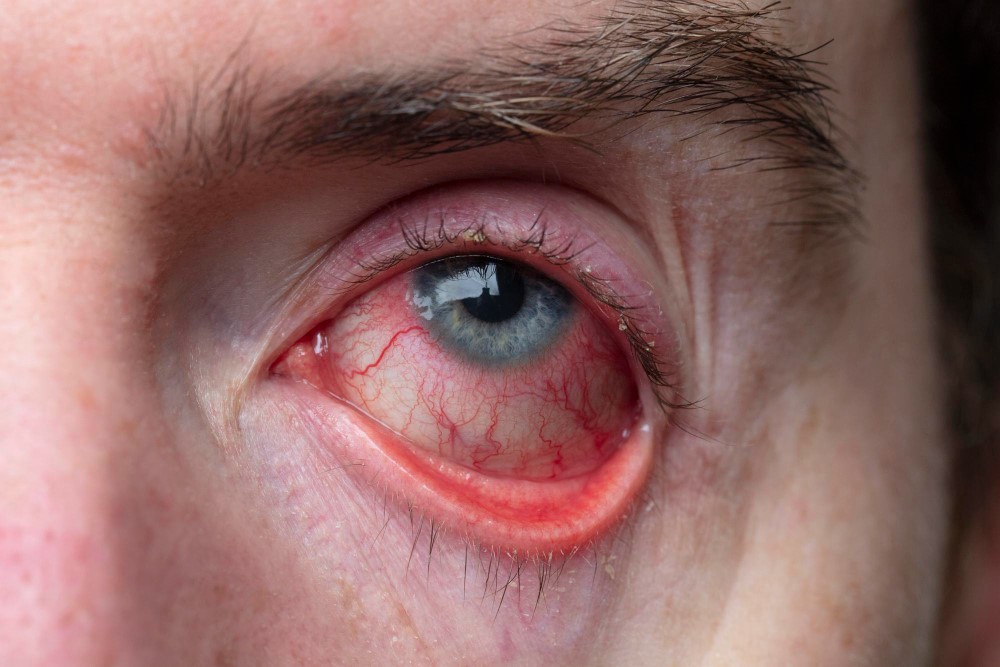Episcleritis is a common eye condition that might not only affect how well you see but also make life a little uncomfortable. When your eyes are red, sore, or irritated, it’s easy to mistake it for just tired eyes or allergies. But sometimes, it could be episcleritis. That’s why it’s important to know what it’s all about.
Understanding episcleritis symptoms is really crucial. If you can catch this condition early, you can get it treated more quickly. This means less discomfort and a quicker return to feeling your best. In India, where pollution levels can impact eye health significantly, recognizing episcleritis early becomes even more relevant. Many may overlook it, thinking it’s just a minor irritation, but episcleritis deserves attention.
Learning about the symptoms of episcleritis helps you differentiate it from more serious eye problems. This makes seeking treatment easier and more effective. It also prevents unnecessary stress. Emphasizing education and awareness can uphold both eye health and quality of life, ensuring episcleritis doesn’t interfere with your daily activities.
A Deeper Look: Causes and Symptoms of Episcleritis
So, what exactly are the causes of episcleritis? Well, episcleritis often kicks in due to inflammation in the episclera, a thin layer at the white part of your eye. Here are some usual suspects causing this condition:
- Autoimmune disorders: These conditions, where your body’s defense system mistakenly attacks its own tissues, can sometimes trigger episcleritis.
- Infections: These might lead to inflammation and result in this eye trouble.
- Environmental factors: Things like dust, pollen, or other irritants may set off episcleritis.
- Idiopathic cases: This term just means doctors can’t always pin down the exact cause.
Let’s dive into some common episcleritis signs:
- Redness: You might notice the whites of your eyes looking red.
- Irritation or discomfort: It can feel like there’s something in your eye.
- Watery eyes: More tearing than usual is a common sign.
- Mild pain: Some people feel a slight ache, though it shouldn’t be severe.
Using these signs, you can conduct a simple self-assessment to see if you might be dealing with episcleritis. If you notice these signs and they’re not going away, it might be time to consult a doctor.
One common misperception is confusing episcleritis with more severe conditions. The good news is, episcleritis is typically less serious and less painful than more severe eye troubles. But yet, knowing the episcleritis symptoms can make all the difference in distinguishing it from others like conjunctivitis or scleritis.
People can easily recognize these symptoms by keeping an eye on anything unusual with their eyes. If redness lingers and doesn’t clear up with regular eye drops, that’s a cue for early intervention!
Navigating Diagnosis: Effective Treatment Options for Episcleritis
Now, let’s talk about getting an episcleritis diagnosis. It usually starts with a detailed look from your eye doctor. Here’s what you might expect:
- A thorough eye exam: Your doctor will examine your eyes with a special microscope.
- A discussion about your symptoms: Telling your doctor about anything unusual you’ve noticed is crucial.
- Ruling out other conditions: Your doctor will make sure it’s not something more serious.
When it comes to treatment for episcleritis, options can vary based on what’s causing it.
- Conservative management: Many cases resolve on their own, so sometimes restful care is all you need.
- Episcleritis eye drops: These are often prescribed to reduce inflammation and provide relief.
- Oral medications: If it’s more persistent, pills might be needed to control inflammation.
- Treating underlying conditions: If an autoimmune disorder is the root cause, managing it can help.
In India, myths around eye conditions often swirl. Some folks might think you can just wash away the redness with rose water or some other quick fix. Remember, relying solely on home remedies may not be enough! It’s essential to follow proven treatments, though episcleritis treatment can sometimes be complemented by:
- Applying cool compresses: This can soothe your eyes.
- Using mild lubricants: Sometimes known as “artificial tears,” these can keep your eyes moist.
Always double-check with your doctor before trying a home remedy alongside medical treatment. This ensures everything works well together.
Embracing Long-term Health: Prevention, Management, and Lifestyle Adjustments
Prevention and management can keep episodic episcleritis from recurring frequently. Here’s how you can help keep your eyes healthier:
- Avoid known irritants: Keep away from things that seem to trigger your eye problems.
- Use eye protection: Sunglasses can shield your eyes from irritating sunlight and dust.
- Maintain good hygiene: Wash your hands often and avoid touching your eyes.
Regular eye check-ups can catch eye conditions early on. Since life can get busy, set reminders for these check-ups to stay on top of your episcleritis prevention.
In India, incorporating traditional practices like Ayurvedic treatments may also contribute to eye wellness. Yet, always ensure these approaches complement your prescribed treatments to avoid interference.
In conclusion, understanding episcleritis symptoms and episcleritis treatment is vital in ensuring prompt action and recovery. Raising awareness can help bridge the understanding gap between what happens in medical offices and how people perceive their eye health. Taking steps to care for our eyes and adapting lifestyle changes can ensure episcleritis doesn’t throw a wrench in your day-to-day life.


